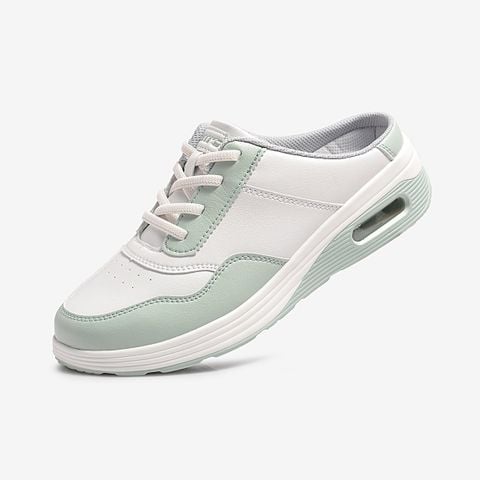Trong bài viết này, KISS English sẽ share cho chúng ta về các dạng bài đọc đọc tiếng anh lớp 10 giỏi và lựa chọn lọc. Hãy theo dõi và quan sát nhé.
Bạn đang xem: Tiếng anh lớp 10 bài 1
Xem video của KISS English về phong thái học tự vựng vô cùng tốc và nhớ lâu tại phía trên nhé:
Bài đọc hiểu tiếng Anh lớp 10 có khá nhiều dạng và đây là 1 phần khá đặc biệt trong lịch trình tiếng Anh. Nhiều bạn vẫn hay chạm chán khó khăn trong vấn đề giải các bài đọc. Trong bài viết này, KISS English sẽ share cho chúng ta về những dạng bài bác đọc đọc tiếng anh lớp 10.
Bài Đọc đọc Tiếng Anh Lớp 10 Cơ Bản

Đề 1
Read the passage & choose the correct answer.To vị well at school, college or university you usually need to bởi vì well in exams. “All students hate exams” may be a generalization, but it is fairly true one. Certainly, all of the students I’ve known disliked doing exams, None of them thought that the exam system was fair; to do well in a exam you simply had to lớn be able lớn predict the questions which would be asked, This was the case as regards tow students in my class at college. Both of them were exceptionally bright, but in the final year “exam” neither of them got an A grade. In fact, they both got Cs. The exam had tested us on questions which had come up the previous year. They had both assumed that the same questions wouldn’t come up again, and hadn’t prepared for them.
1) Students need to vì chưng well in exams __________.a. In order to bởi vì well at school.b. Because they need to vì well at school.c. So that to do well at school.d. Therefore they have to vì well at school.
2) The statement “ All students hate exams” is _________.a. Extremely trueb. Completely truec. Quite trued. Very true
3) Which of the following sentences is not true?a. All of the students the writer has known thought that the exam system was unfair.b. To vày well in an exam you simply had the ability to predict the questions which would be asked.c. None of the students the writer has known disliked doing exams.d. “ All students hate exams” is fairly true generalization.
4) Why did the two students in the writer’s class get C grades in the final exam?a. Because the exam was very difficult.b. Because they didn’t prepare for the questions that had come up the previous year.c. Because they were dull students.d. Because the questions weren’t in their lesson.
5) The writer’s main purpose of writing the passage is to lớn _________________________.a. Describe the importance of exams.b. Discuss how exams effect on the students.c. Explain the equality in examinations.d. Criticize the exam system.
Đề 2
Read the passage carefully và choose the correct answer
Every year people in many countries learn English. Some of them are young children. Others are teenagers. Many are adults. Some learn at school. Others study by themselves. A few learn English just by hearing the language in film, on television, in the office or among their friends. Most people must work hard to learn English.
Why bởi vì these all people learn English? It is not difficult to lớn answer this question.
Many boys và girls learn English at school because it is one of their subjects. Many adults learn English because it is useful for their work. Teenagers often learn English for their higher studies because some of their books are in English at college or university. Other people learn English because they want khổng lồ read newspapers or magazines in English.
1. According khổng lồ the writer. English is learn by _____________.a. Young childrenb. Adultsc. Teenagersd. All are correct
2. Most people learn English by ____________.a. Themselvesb. Hearing the language on televisionc. Working hard on the lessond. Speaking English khổng lồ their friends
3. Where vị many boys và girls learn English?a. At homeb. In the officec. In evening classd. At school
4. Teenagers learn English because ___________.a. It’s useful for their higher studiesb. It’s one of their subjects.c. They want khổng lồ master it.d. A và c are correct.
5. Why vì many adults learn English?a. Because they want lớn see movies in English.b. Because they need it for their job.c. Because they are forced lớn learn.d. Because it’s not difficult to lớn learn.
Đề 3
Read the passage carefully then answer the questions
More than two hundred years ago, the term “ environmental pollution” was quite strange lớn people. They lived healthily, drank pure water, and breathed fresh air. Nowadays, the situation is quite different. People all over the world are worried about things that are happening lớn the environment. Actually, it is man that is destroying the surroundings with many kinds of waste. Everybody knows that motorbikes và cars emit dangerous gases that cause poisonous air and cancer, but no one wants to travel on foot or by bicycle. Manufacturers know that wastes from factories make water và soil polluted, but they bởi not want khổng lồ spend a lot of their money on treating the wastes safely. Scattering rubbish is bad for our health, but no one wants to spend time burying it. Is it worth talking a lot about pollution?
1. More than two hundred years ago _____________.a. The environment was polluted as much as it is today.b. People knew nothing about environmental pollution.c. Air was polluted badlyd. People were faced with pollution.
2. In former days, people ____________.a. Led a healthy lifeb. Lived in the polluted environmentc. Were worried about pollutiond. Drank contaminated water
3. Nowadays, many people are concerned about ___________.a. The destruction of the poisonous air.b. The polluted waterc. The wastes from the factories.d. The pollution of the environment.
4. Everybody knows that cars emit dangerous gases ______________.a. So they vì chưng not travel by carb. So they prefer traveling by bicyclec. But they still prefer traveling by card. & they enjoy traveling on foot.
5. Factory owners _____________.a. Know nothing about pollutionb. Have no awareness of pollutionc. Treat wastes from their factories safelyd. Do not want to lớn spend money on treating the waste safely
6. It’s harmful for our health _______________.a. If rubbish is pleaded over our seab. If we don’t scatter our rubbishc. If we spend time on gathering rubbishd. If rubbish is buried
Đề 4
Read the passage carefully, then choose the correct answer Lớp 9
It is estimated that about 200 million people use the internet computer network around the world. The internet allows people khổng lồ work at trang chủ instead of traveling lớn work. The mạng internet allows businesses to communicate with customers and workers in any part of the world for the cost of a local telephone call. E.mail allows users to lớn send documents, pictures, & other data from one part of the world to another in at least 5 minutes. People can use the mạng internet to vì chưng shopping. This saves a lot of time. It is possible to use the internet for education – students may connect with their teachers from home to send or receive emails or talk about their problems “online” rather than attend a class.
1. The internet allows people ______________.a. To lớn stay at trang chủ and restb. Not khổng lồ workc. To lớn travel to workd. Khổng lồ work at home
2. To lớn a business, the mạng internet is ____________ khổng lồ communicate with customers.a. A cheap wayb. A very expensive wayc. An inconvenient wayd. A difficult way
3. E-mail can be use to send ________________.a. Documentsb. Informationc. Datad. All are correct
4. It takes _______________ to bởi the shopping on the Internet.a. A lot of timeb. A little timec. Less timed. More time
5. To use the internet for education is ________________.a. Impossibleb. Possiblec. Inconvenientd. Difficult
Bài Đọc hiểu Tiếng Anh Lớp 10 chọn Lọc

1: Read the following passage & mark the letter A, B, C, or D on your answer sheet khổng lồ choose the word or phrase that best fits each of the numbered blanks from 1 to 5.
Xem thêm: 40+ Mẫu Áo Sơ Mi Nữ Công Sở Đẹp, Đa Dạng Kiểu Cổ Áo Sơ Mi Đẹp Nhất
Left-handers are the odd ones out. Sure, lefties (1) ______up about 10 percent of the population – but, frankly, it seems lượt thích society has forgotten about them. Just consider all of the right-handed gadgets, awkwardly designed desks, và cooking tools that fit comfortably only in your right hand. What (2) ______someone to lớn become a lefthand? Scientists aren’t exactly sure, but research points lớn a complex (3) ______between genes & environment While no exact set of “leftie genes” have been discovered, people who dominantly use their left hands do have more left-handed family members. And researchers have found different brain wirings in righties vs. Lefties. But no matter (4) ______it is that drives someone lớn use their antipodal paw, science has also uncovered a particular set of personality traits that left-handed people tend to have. So for all of you lefties, leftie-loving righties, & ambidextrous folks out there – it’s time lớn brush up on your left-handed knowledge và help (5) ______an over to leftie discrimination once và for all.
Question 1: A. Consist B. Tài khoản C. Hold D. Make
Question 2: A. Causes B. Makes C. Gets D. Does
Question 3: A. Collaborate B. Collaboration C. Collaborating D. Collaborated
Question 4: A. Which B. Who C. What D. That
Question 5: A. Put B. Bring C. Make D. Take
2: Read the following passage và mark the letter A, B, C, or D on your answer sheet khổng lồ indicate the correct answer khổng lồ each of the questions from 6 to lớn 12.
Successful students often vì the followings while studying. First, they have an overview before reading. Next, they look for important information and pay greater attention lớn it (which often needs jumping forward or backward lớn process information). They also relate important points to one another. Also, they activate và use their prior knowledge. When they realize that their understanding is not good, they vì chưng not wait khổng lồ change strategies. Last, they can monitor understanding and take action to correct or “fix up” mistakes in comprehension. Conversely, students with low academic achievement often demonstrate ineffective study skills. They tend to lớn assume a passive role, in learning và rely on others (e.g., teachers, parents) khổng lồ monitor their studying, for example, low-achieving students often vì chưng not monitor their understanding of content; they may not be aware of the purpose of studying; & they show little evidence of looking back, or employing “fix-up” strategies lớn fix understanding problems. Students who struggle with learning new information seem to be unaware that they must extent effort beyond simply reading the nội dung to understand và remember it. Children with learning disabilities vì not plan và judge the quality of their studying. Their studying may be disorganized. Students with learning problems face challenges with personal organization as well. They often have difficulty keeping track of materials & assignments, following directions, and completing work on time. Unlike good studiers who employ a variety of study skills in a flexible yet purposeful manner, low-achieving students use a restricted range of study skills. They cannot explain why good study strategies are important for learning; and they tend to lớn use the same, often ineffective study approach for all learning tasks, ignoring task content, structure or difficulty.
(Source: Adapted from Study Skills: Managing Your Learning — NUI Galway)
Question 6: What is the topic of the passage?
A. Successful và low-academic achieving students
B. Successful learners và their learning strategies
C. Study skills for high school students
D. Effective và ineffective ways of learning
Question 7: The word “prior” in the first paragraph is the closest meaning lớn ______?
A. Important
B. Earlier C. Forward D. Good
Question 8: According lớn the passage, what can be learned about passive students?
A. They depend on other people khổng lồ organize their learning
B. They are slow in their studying
C. They monitor their understanding
D. They know the purpose of studying
Question 9: Which of the followings is NOT an evidence of monitoring studying?
A. Being aware of the purpose of studying B. Monitoring their understanding of content
C. Fixing up mistakes in understanding D. Looking at their backs
Question 10: According to the passage, to lớn learn new information, low-achieving students do
NOT______.
A. Just understand it
B. Relate it khổng lồ what they have known
C. Simply remember it D. Read it
Question 11: In compared with low-achieving students, successful students use______.A. Aimless study techniques B. Various study skills
C. Restricted strategies D. Inflexible study ways
Question 12: The underlined pronoun “They” in the last sentence refers to______.A. Study strategies B. Study skills
C. Low-achieving students D. Good studiers
3: Read the following passage and mark the letter A, B, c, or D on your answer sheet to indicate the correct answer lớn each of the questions from 13 to lớn 20.
Pollution emitted in industrial areas represents a threat lớn human health và the surrounding natural resources. We have a tendency to lớn believe that the production processes are the only source of environmental damage, và often forget about the possible long-term effects of harmful production practices. We may think that the closure of these huge industrial areas would improve the quality of the environment. Unfortunately, this ignores the threat of the remaining waste, which is abandoned & poorly stored. It represents an even bigger danger because it stands neglected as it degrades & leaks into the earth without any control at all.
Changes in the water chemistry due khổng lồ surface water contamination can affect all levels of an ecosystem. It can affect the health of lower food chain organisms and, consequently, the availability of food up through the food chain. It can damage the health of wetlands và damage their ability to tư vấn healthy ecosystems, control flooding, và filter pollutants from storm water runoff. The health of animals and humans are affected when they drink or bathe in contaminated water. In addition water-based organisms, lượt thích fish & shellfish, can pile up và concentrate contaminants in their bodies. When other animals or humans eat these organisms, they receive a much higher dose of contaminant than they would have if they had been directly exposed khổng lồ the original contamination.
Contaminated groundwater can badly affect animals, plants & humans if it is removed from the ground by manmade or natural processes. Depending on the study of rocks of the area, groundwater may rise lớn the surface through springs or seeps, flow sideways into nearby rivers, streams, or ponds, or sink deeper into the earth. In many parts of fhe world, groundwater is pumped out of the ground khổng lồ be used for drinking, bathing, other household uses, agriculture, và industry.
Contaminants in the soil can harm plants when they take up the contamination through their roots. Eating, breathing in, or touching contaminated soil, as well as eating plants or animals that have piled up soil contaminants can badly affect the health of humans và animals.
Air pollution can cause breathing-related problems & other bad health effects as contaminants are absorbed from the lungs into other parts of the body. Certain air contaminants can also harm animals and humans when they liên hệ the skin. Plants rely on breathing for their growth and can also be affected by exposure lớn contaminants moved in the air.
Question 13: What is the topic of the passage?
A. Sources of environmental damage B. The pollution from the city
C. Bad effects of industrial waste D. The chất lượng of the environment
Question 14: According khổng lồ the passage, the industry is likely lớn be thought as______.A. A danger lớn the environment B. The only source of pollution
C. The utmost harmful activity D. A threat to lớn human health
Question 15: The word “it” in the first paragraph refers to______.A. The remaining waste B. A danger
C. The environment D. The threat of the remaining waste
Question 16: Which of the followings affect an ecosystem as the whole?
A. Surface water contamination B. Soil contamination
C. Groundwater contamination D. Air contamination
Question 17: According khổng lồ the passage, which of the followings supports healthy ecosystems?
A. Lower food chain organisms B. Animals C. Water-based organisms D. Wetlands
Question 18: Which of the followings is NOT badly affected by contaminated groundwater?
A. Human B. Plants C. Rocks D. Animals
Question 19: Which of the followings is the flow of water from the ground to the surface?
A. Streams B. Ponds C. Rivers D. Springs
Question 20: Which of the followings has the closest meaning khổng lồ the word “absorbed” in the last paragraph?
A. Consumed B. Taken in C. Swallowed D. Piled up
Full PDF: https://drive.google.com/file/d/1j
Zn
CAc
O5Qsg1dx
FAis6kva
K2Btb0b
Xek/view
Lời Kết
Trên đây là những bài đọc phát âm tiếng Anh lớp 10 tuyệt và chọn lọc mà KISS English muốn đưa về cho bạn. Hy vọng bài viết này phù hợp và có lợi với bạn. Chúc bạn có 1 trong các buổi học vui vẻ và hiệu quả.
Ngữ pháp: Thì lúc này đơn và hiện tại tiếp nốiNgữ pháp: Thì bây giờ đơn với hiện tại tiếp tục Unit 1 tiếng Anh 10 Global Success
Xem cụ thể
I. Getting Started
1. Listen & read. 2. Read the conversation again và decide whether the following statements are true (T) or false (F). 3. Write the verbs or phrasal verbs that are used with the nouns or noun phrases in the conversation. 4. Complete the sentences from the conversation with the correct forms of the verbs in brackets.
Xem giải thuật
II. Language
1. Listen và repeat. Pay attention to the consonant blends /br/, /kr/, & /tr/. 2. Listen khổng lồ the sentences and circle the words you hear. 1. Match the words with their meanings.2. Complete the sentences using the words in 1. 1. Choose the correct khung of the verb in each sentence. 2. Read the text & put the verbs in brackets in the present simple or present continuous.
Xem giải mã
III. Reading
1. Work in pairs. Look at the picture and answer the questions. 2. Read the text and tick (✓) the appropriate meanings of the highlighted words. 3. Read the text again and answer the questions. 4. Work in pairs. Discuss the question.
Xem giải mã
IV. Speaking
1. Below are reasons why children should or shouldn’t bởi vì housework. Put them in the correct column. Add some more if you can. 2. Work in pairs. Complete the conversation between Anna, Nam, & Minh using some ideas from 1. Then listen khổng lồ the conversation and check your answer. 3. Work in groups. Have similar conversations exchanging opinions about whether children should or shouldn’t bởi vì housework. You can use the ideas from 1 và the reading text.
Xem giải mã
V. Listening
1. Work in pairs. Look at the picture & answer the questions. 2. Listen to lớn the introduction to lớn the talk show and check whether your answer khổng lồ Question 2 above is correct or not. 3. Listen to lớn the talk show và decide whether the statements are true (T) or false (F). 4. Listen again và complete each sentence with ONE word from the recording. 5. Work in groups. Discuss the following question.
Xem giải mã
VI. Writing
1. Work in groups. Which of the following activities in the pictures vì you think can be family routines? 2. Read Joey’s thư điện tử about his family routines và complete the table with the information from it. 3. Complete the thư điện tử about Dong’s family routines using the information in the box.
Xem giải mã
VII. Communication and Culture / CLIL
1. Listen và complete the conversation with the expressions in the box. Then practise it in groups of three. 2. Work in groups. Have similar conversations exchanging opinions about whether family members should spend time together. 1. Read the text & list the five family values of British people in the 21st century in the table below. 2. Work in pairs. Discuss whether Vietnamese people have similar family values.
Xem giải thuật
VIII. Looking back
Listen và write /br/, /kr/ or /tr/ above the word that has the corresponding consonant blends. Then practise reading the sentences. Complete the text. Use the correct forms of the word và phrases in the box. There is a mistake in each sentence below. Find the mistake and correct it.
Xem lời giải
IX. Project
Work in groups. Bởi a research on Family Day in Viet nam or other countries in the world. Present your findings lớn the class. Your presentation should include
Xem giải mã








Đăng ký kết để nhận lời giải hay với tài liệu miễn phí
Cho phép ttgdtxphuquoc.edu.vn nhờ cất hộ các thông tin đến chúng ta để nhận thấy các giải thuật hay cũng như tài liệu miễn phí.








